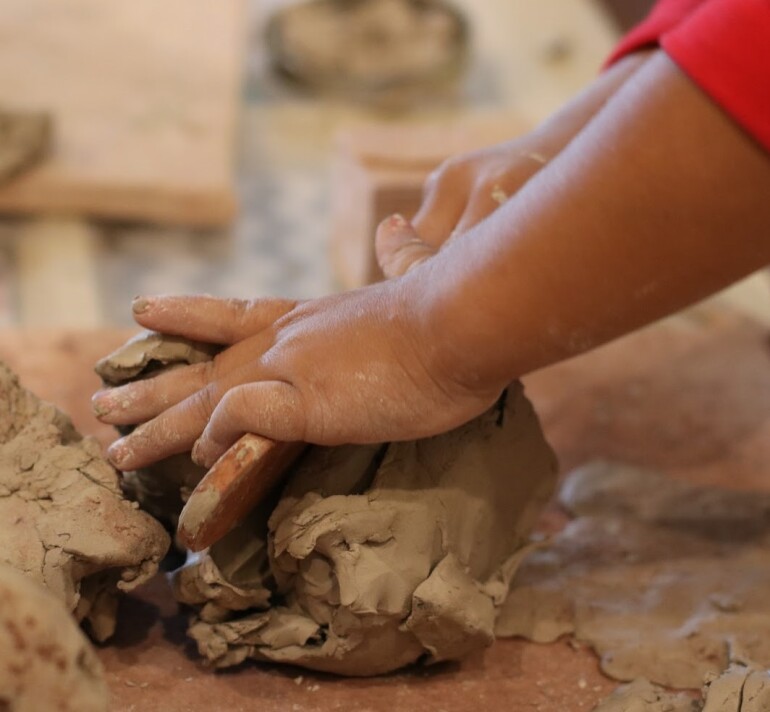News And Events

Working With Clay
20 February 2024This month our Educators/Nannies are receiving a clay starter-kit to support sensory/messy play.
Clay is a natural resource that has no right or wrong way to be used. It can be cut, pinched, rolled, squeezed and moulded into different shapes and its texture can be changed by adding water. It can be reused and recycled when it is dry. Clay, like playdough, provides children with many opportunities to be creative and expressive. Clay can be used to create long-lasting shapes. Although clay is similar to playdough the different texture, consistency and smell means that children can produce different products and have different experiences when they work with clay.
The great thing about clay is that little more than a damp sponge to keep the clay moist is necessary. Children’s exploration, handling, poking, shaping and forming the clay can be quite ample on its own. It’s a good idea to have a bucket of water and towel close by so tamariki can wash their hands after their play.
To store clay, cover with a damp cloth and store in a plastic bag in an airtight container. If the clay gets really hard, break it up with a hammer and soak it in water. Drain off extra water when the clay has softened. Turn the clay out onto a cloth and sit it on top of newspaper. Leave it to dry to a manageable consistency before using again. Children enjoy being involved in the process of breaking up and re-wetting dry clay.
Here's some additional ideas for sensory play for the different age groups:
Infants
Small water play in shallow containers with sponges; fabric with different textures to roll/sit on; cloth books; home-made sensory bottles; blowing bubbles; sensory paint bags; lying outdoors on grass.
Toddlers
Baskets of natural items such as pine-cones, pumice, shells; non-toxic finger painting; playdough; water play with dishwash liquid and blocks; ribbons for twirling or fixing like a curtain to crawl under.
Young Children
Gloop; clay; baking/cooking; freezing coloured water for painting; lying on grass outdoors and listening for nature sounds; sand and water play.
You can find more recipes for messy play in our “Recipes” booklet.
The learning outcomes from Te Whāriki for sensory play include:
- Recognising and appreciating their own ability to learn | te rangatiratanga
- Using gesture and movement to express themselves | he kōrero ā-tinana
- Expressing their feelings and ideas using a range of materials and modes | he kōrero auaha
- Playing, imagining, inventing and experimenting | te whakaaro me te tūhurahura i te pūtaiao
- Making sense of their worlds by generating and refining working theories | te rangahau me te mātauranga


